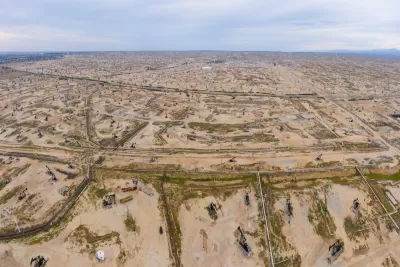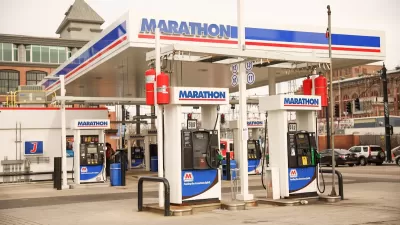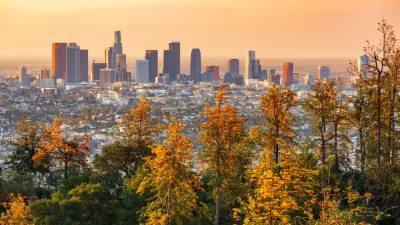Kern County supervisors voted to support a carbon storage project that will inject climate-warming gases into a former oil and gas field.

California’s Kern County approves the state’s first project that will attempt to bury climate-warming gases underground in an effort to limit the amount of emissions that go into the air, according to an article from CALmatters.
“The project by California Resources Corp., the state’s largest producer of oil and gas, will capture millions of tons of carbon dioxide and inject it into the ground in the western San Joaquin Valley south of Buttonwillow,” the article explains. “California Resources Corp. plans to annually collect 1.46 million metric tons of carbon dioxide and inject it into the ground more than a mile deep into the Monterey Formation, a vast geological structure that has long been a key source of California’s oil.”
The site in the San Joaquin Valley was selected partly due to the presence of the depleted Elk Hills oil and gas field, which could be an ideal carbon storage solution. The project, known as Carbon Terra Vault, is one way oil and gas companies are fighting to stay relevant and viable as the state works toward a zero-emissions future. “The Newsom administration has endorsed carbon capture and sequestration technology as critical to California’s efforts to tackle climate change — it plays a major role in the administration’s action plan for slashing greenhouse gases over the next 20 years.”
In a public meeting, local activists expressed concern about the project’s potential to contaminate the surrounding area. “They say the technology could prolong the life of oil and gas and that the project would emit air pollutants that could pose health risks to low-income communities in the valley.”
FULL STORY: First California project to bury climate-warming gases wins key approval

Study: Maui’s Plan to Convert Vacation Rentals to Long-Term Housing Could Cause Nearly $1 Billion Economic Loss
The plan would reduce visitor accommodation by 25,% resulting in 1,900 jobs lost.

North Texas Transit Leaders Tout Benefits of TOD for Growing Region
At a summit focused on transit-oriented development, policymakers discussed how North Texas’ expanded light rail system can serve as a tool for economic growth.

Using Old Oil and Gas Wells for Green Energy Storage
Penn State researchers have found that repurposing abandoned oil and gas wells for geothermal-assisted compressed-air energy storage can boost efficiency, reduce environmental risks, and support clean energy and job transitions.

Private Donations Propel Early Restoration of Palisades Playground
Los Angeles has secured over $1.3 million in private funding to restore the Pacific Palisades playground months ahead of schedule, creating a modern, accessible space that supports community healing after recent wildfires.

From Blight to Benefit: Early Results From California’s Equitable Cleanup Program
The Equitable Community Revitalization Grant (ECRG) program is reshaping brownfield redevelopment by prioritizing projects in low-income and environmental justice communities, emphasizing equity, transparency, and community benefits.

Planting Relief: Tackling Las Vegas Heat One Tree at a Time
Nevada Plants, a Las Vegas-based nonprofit, is combating the city’s extreme urban heat by giving away trees to residents in underserved neighborhoods, promoting shade, sustainability, and community health.
Urban Design for Planners 1: Software Tools
This six-course series explores essential urban design concepts using open source software and equips planners with the tools they need to participate fully in the urban design process.
Planning for Universal Design
Learn the tools for implementing Universal Design in planning regulations.
Ascent Environmental
Borough of Carlisle
Institute for Housing and Urban Development Studies (IHS)
City of Grandview
Harvard GSD Executive Education
Toledo-Lucas County Plan Commissions
Salt Lake City
NYU Wagner Graduate School of Public Service




























